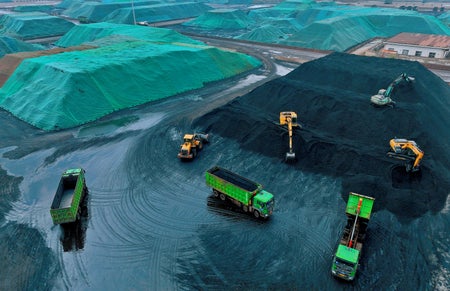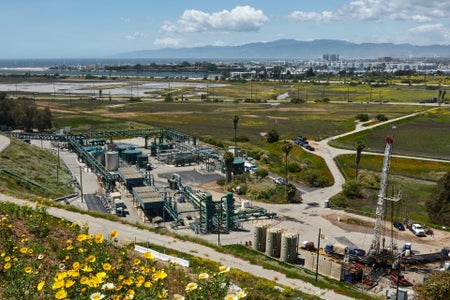
U.S. Emissions Fell by 2 Percent in 2023, Even as Economy Grew
Collapsing coal use drove a reduction in overall U.S. greenhouse gas emissions, but transportation emissions are still on the rise

Collapsing coal use drove a reduction in overall U.S. greenhouse gas emissions, but transportation emissions are still on the rise

Solar and natural gas surged last year in the U.S., while wind stumbled

Even as the COP28 climate meeting agreed to transition away from fossil fuels, global emissions are on the rise, coal consumption is set to break records, and oil and gas production is booming in the U.S.

The potential of geothermal energy as a carbon-free power source is well known. Now companies such as Google are helping to unlock it

A projected drop in U.S. greenhouse gas emissions—one of the largest of the past decade—is still not enough to meet the country’s commitments under the Paris climate accord

The two nations announced limited steps to address climate change. But even a modest agreement could have far-reaching effects

A surge in battery storage is helping Texas beat the heat without additional fossil fuels

Construction has begun on the Vineyard Wind project off the coast of Massachusetts. It could provide enough clean energy to power 400,000 homes per year

The president is close to fulfilling his promise to cut carbon pollution in half, but everything has to go right

Solar power has been crucial to keeping the power on in Texas while the state experiences a major heat wave, even as some politicians have attempted to make it more difficult to connect renewable energy to the grid

Wind and solar produced more U.S. power than coal during the first five months of this year, as several coal plants closed and gas prices dropped

The U.S. is in a better place to reach its climate goals after the passage of the Inflation Reduction Act and the bipartisan infrastructure bill, but the implementation of pollution rules and the outcome of the 2024 election could pose major hurdles

The U.S. installed more battery storage last year than ever before, with California and Texas leading the way

Scientists working for the oil giant Exxon in the 1970s and 1980s estimated temperature increases with remarkable accuracy. Those findings could now be used as evidence in climate litigation

Though renewable energy surpassed coal generation for the first time in 60 years, causing U.S. power emissions to decline, emissions from buildings and transportation went up in 2022

A slow economy, clean energy spending, electric vehicles and heat pumps could offset coal combustion to level carbon emissions

Increasing demand for natural gas and oil has offset emissions reductions associated with coal and pushed U.S. energy emissions higher for a second consecutive year

Wind, solar and hydropower will generate more than 20 percent of the power supply

The effects of climate change in the U.S. are steadily worsening and disproportionately affect the most vulnerable residents, a draft report of the next National Climate Assessment finds

The large utility PacifiCorp is studying the viability of turning five fossil-fuel plants into nuclear-energy-and-storage facilities

Emissions associated with energy use are on track to increase by only 1 percent this year because of a boom in wind and solar power

Emissions models can understate the difficulty of rapidly reducing carbon dioxide this decade

The Senate’s passage of a monumental climate bill comes after decades of legislative defeats, but it is still an early step in drastically reducing greenhouse gas emissions

The surprise climate bill’s electricity provisions would help the U.S. surge toward its emissions reduction goals